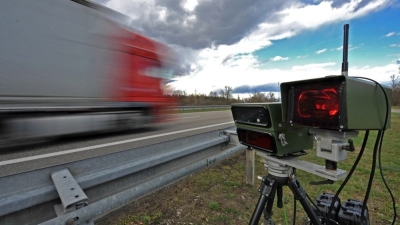Is 2023 the year when carbon capture and storage finally takes off?

The European Commission has finally acknowledged the absence of carbon capture and storage (CCS) from its emissions-reduction strategy but much remains to be done, writes Chris Davies.
It has been a long time coming but the European Commission has at last recognised that it has a gaping hole at the heart of its climate policy.
The absence of carbon capture and storage (CCS) from its emissions-reduction strategy has left it without a credible means of achieving its CO2 net-zero ambition, and this despite the authoritative voice of the Intergovernmental Panel on Climate Change (IPCC) many times insisting that the technology will be needed.
But acceptance is now taking the place of reluctance, targets are being set, and the outline of a CCS deployment strategy is starting to take shape.
The Commission’s past reluctance may have grown from the sense that involvement with CCS was a career killer.
It was as long ago as January 2007 that the Commission made a promise to design a mechanism to stimulate the construction and operation by 2015 of up to 12 large-scale CCS demonstration projects. Not a single one has even been started since then, let alone completed.
A funding support mechanism, the NER300, failed to deliver, and a billion euros made available from a 2009 economic recovery programme ended up with little to show for it.
Environmental NGOs, alleging that CCS was simply a means of supporting the continued use of fossil fuels, delighted in their mockery of the technology.
Reducing CO2 emissions from coal power stations was the foundation for 2007 thinking.
Since then, the subsidies paid to encourage the successful development of renewable energy systems have moved the dial, reducing (but not always eliminating) the dependency of many Member States on fossil fuels.
The focus now is on the use of CCS technology to curb emissions from energy-intensive and hard-to-abate industry sectors.
The cement industry, for example, argues that even if it makes use of every other means available to reduce its CO2 emissions, there is no alternative to carbon capture to prevent the release of at least 40% of them that result from the manufacturing process.
This year has started well for CCS. On March 8, Commission president Ursula von der Leyen set a benchmark by declaring that the EU needs by 2050 to be placing 300m tonnes of CO2 annually into permanent underground storage.
Some of that may be derived from organic materials perhaps incinerated in one of Europe’s 500 waste-to-energy facilities. Some may come from capturing CO2 directly from the air.
Both would compensate in part for the reduced but continuing release of greenhouse gases.
Either way, it is a “staggering amount” declared von der Leyen, although many regard it as an underestimate of the true requirement.
A week after she spoke the Commission adopted its Net-Zero Industry Act, with proposals to put pressure on oil and gas companies to ensure that a storage capacity of 50m tonnes annually is made available by 2030.
The Zero Emission Platform has since held a conference in Brussels that highlighted the 73 CCS projects said now to be under development across Europe, and April marked the launch of CCS Europe, a new advocacy group supported by industrial companies, business associations and environmental NGOs that recognise the urgent need for the technology.
Most importantly, a business case for CCS investment is emerging.
Environmentalist critics of CCS have usually ignored the fact that the only purpose of CCS is to prevent CO2 emissions into the atmosphere; it is not a profit-making investment.
In its support for CCS sixteen years ago the European Commission assumed that the cost of emissions trading allowances would provide the financial incentive needed, but that hope was destroyed as the carbon price fell as low as €4 per tonne.
With the price of CO2 allowances today at around €90 per tonne, and free allowances for industry set to end, assumptions start to change.
The cement industry alone could be paying €14 billion a year by 2034 to cover the cost of its CO2 emissions. Even with CCS plants costing many hundreds of millions that investment must start to look like an attractive alternative.
So have we reached the tipping point when CCS finally takes off? Given the track record to date, it would be wise not to place a bet on it.
Very likely 2023 will see some final investment decisions taken and some CCS projects given the go-ahead, but these alone will not be sufficient to open the floodgates.
In Norway, the Norcem cement plant is being equipped at a cost of more than €400 million to capture 400,000 tonnes of CO2 annually for permanent storage.
If the Commission president’s 2050 target is to be achieved we will need a project of similar size to be confirmed somewhere in Europe every twelve days for the next 25 years.
It can be done, but only with a wholehearted commitment from EU governments which is currently missing.
Most Member States have yet to engage seriously with the need to reduce CO2 emissions from industry and from the fossil fuel power stations that will back up their renewable energy supplies.
Denmark, the Netherlands and Sweden are providing leadership, but most other governments have yet to adopt CCS deployment strategies, set targets, or put in place the financial mechanisms needed to support first movers who will bear costs greater than those that follow.
CCS deployment needs policies at the national as well as European levels, and to secure their rapid introduction it needs enthusiastic and vocal champions.
The European Commission has begun to raise its voice; it needs to start shouting a lot louder.



